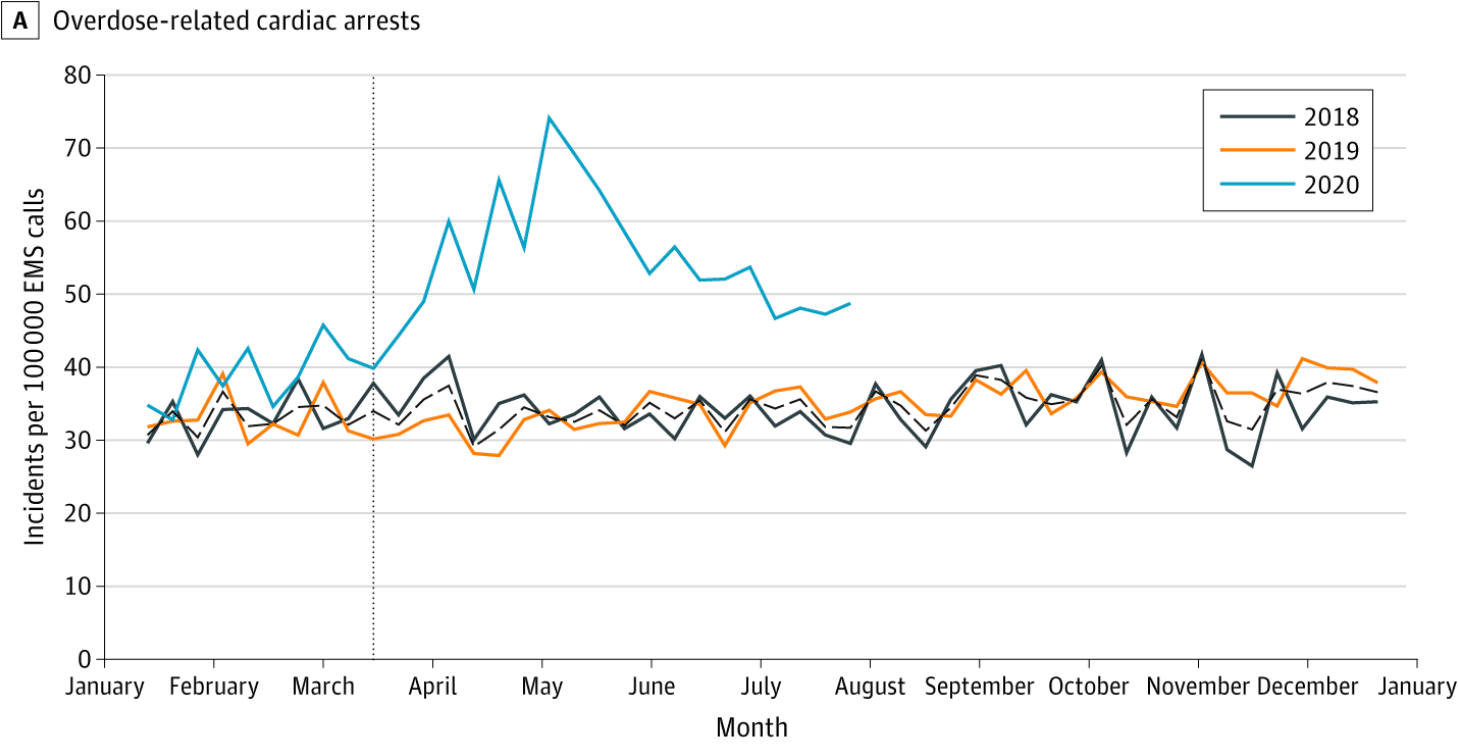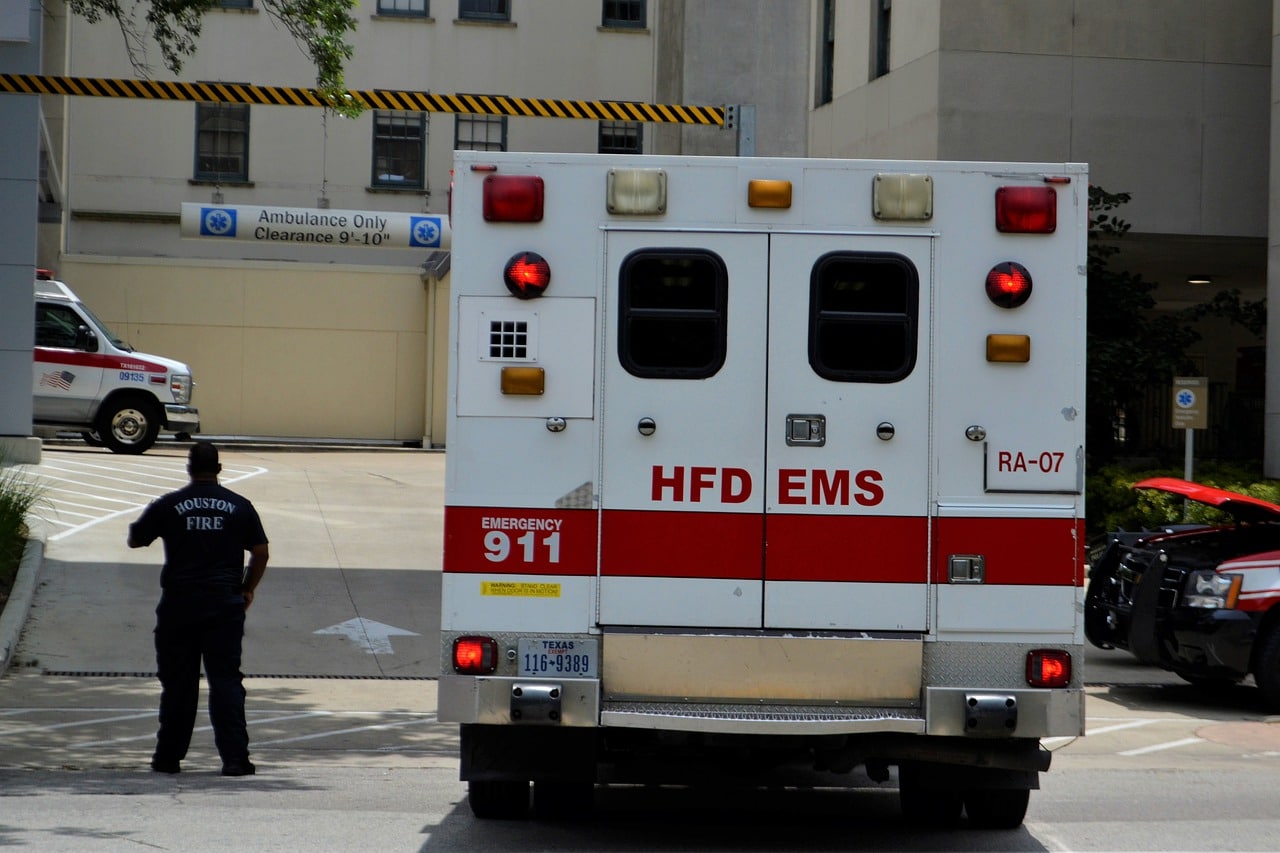Nine months into the COVID-19 pandemic, some of the first available research has finally measured what harm reductionists have known and feared since the beginning of the crisis—fatal overdose has spiked, significantly, nationwide. In 2020, Emergency Medical Services responded to overdose-related cardiac arrests at a rate nearly 50 percent higher than previous years, according to a new paper published in JAMA.
The researchers pulled from a nationwide registry of more than 10,000 EMS agencies known as NEMSIS, which uses cell phone data to measure social interaction (in this case up through August 1). Unlike data from the Centers of Disease Control and Prevention, which can take more than a year to publish mortality databases, NEMSIS updates are available in close to real time.
While the data are limited in that it only reflects overdoses involving EMS—and NEMSIS itself only reflects 80 percent of EMS-served incidents—it shows a tight, almost exact relationship between the national timeline of lockdowns and EMS-involved overdoses. “You can see the peak in overdose-related cardiac arrest is very close in time to the peak in decreased mobility,” first author Joseph Friedman told Filter. At their peak, in mid-May, these overdoses increased by more than 120 percent.

JAMA graphic illustrating the findings
“I was expecting to see an increase [in overdoses], because there have been a lot of preliminary reports from all over the country—from a particular jurisdiction, from a coroner’s office or a state that has been able to make traditional mortality records available—but I was surprised by the magnitude of this increase,” Friedman said. “It’s very unfortunate and very alarming.”
Overdoses Are Becoming Deadlier
The 50 percent increase reflected in the data corresponds to overdoses that we can assume were, for the most part, fatal. ”[This] isn’t a formal death registry; we don’t know for sure that every person in the study died. But, based on the clinical experience of the team, once an overdose progresses to cardiac arrest … at that point most would result in fatality,” Friedman said. By comparison, EMS response to overdose-related calls overall—not just the ones involving cardiac arrest—were elevated around 17 percent compared to previous years.
That the pandemic has brought on not just a spike in overdose, but a particular spike in fatal overdose, should suggest to us that we cannot write off these incidents as merely the result of people in isolation being sad or stressed. It suggests, rather, specific systemic failures playing out at a national level.
“Overdose is in a sense a structural dysfunction.”
Syringe programs, already operating on skeleton crews, are seeing their budgets slashed, and people are often intimidated out of engaging with what services do remain. Access to life-saving naloxone, buprenorphine and methadone has for many drug users remained fraught, despite government promises that the regulations around those medications would ease.
“I’ve heard of initial visits for buprenorphine costing $1,000,” Friedman said. “Right now many people are on the brink economically, and accessing health care in this country can unfortunately bankrupt people. So we need to do everything we can to make healthcare affordable and accessible, and for this particular issue make healthcare as close to free as possible.”
To curb the death rate, we need to make buprenorphine and methadone both financially and logistically accessible. We should be letting pharmacies dispense methadone, and physicians prescribe buprenorphine regardless of whether they’re waivered to do so. We should be budgeting emergency funding so that these medications are available for free to people who don’t have insurance.
“Overdose is in a sense a structural dysfunction,” Friedman said. “We need to make sure people have access to employment and education and housing and health care. I think many of those big structural things are why we’re seeing such a big spike right now. So anything we can do to stabilize people’s lives, like providing funds for them to have food and housing, and continuing the eviction moratorium—basically keeping everyone safe and housed—that will all be helpful for the overdose crisis.”
Photograph via Pixabay





Show Comments